The end-to-end warehouse in the cloud
SAP Datasphere
SAP Datasphere offers a solution for seamlessly processing and integrating data in various formats. With an intuitive cloud environment, the platform enables data acquisition, integration, processing and distribution as well as the direct application of machine learning.

Contents
- 01 From data warehouse to business data fabric with SAP Datasphere
- 02 Our customers speak for themselves
- 03 Migration from SAP BW 7.x
- 04 Successful business decisions thanks to end-to-end management
- 05 SAP Datasphere: Software as a Service
- 06 Single Source of Truth
- 07 Data modeling
- 08 Reporting
- 09 Offerings
- 10 News and blogposts
- 11 Your contact
From data warehouse to business data fabric with SAP Datasphere
Today, companies have access not only to vast amounts of data, but also to a wide variety of data sources, both inside and outside the company’s borders. Taking advantage of this data has become not only a competitive advantage, but a business model and vital for many companies. However, integrating and leveraging these vast amounts of data is a major challenge.
The SAP Datasphere enables companies to process and seamlessly integrate data across multiple sources and formats in data models. Machine learning can also be applied directly to the data to gain meaningful insights from it. The cloud environment provides an intuitive user interface and combines a wide range of data acquisition, data integration, data processing, and data distribution functions.
The SAP Datasphere has a feature set that goes far beyond ordinary data warehouses. This makes it a business fabric. A business fabric is a data landscape that provides meaningful data to all users while maintaining the business logic and application context of the data. With the SAP Datasphere, the business context is preserved during extraction; it is processed and made available to the right users. Features such as the data catalog and application area-related roles significantly enrich the landscape.
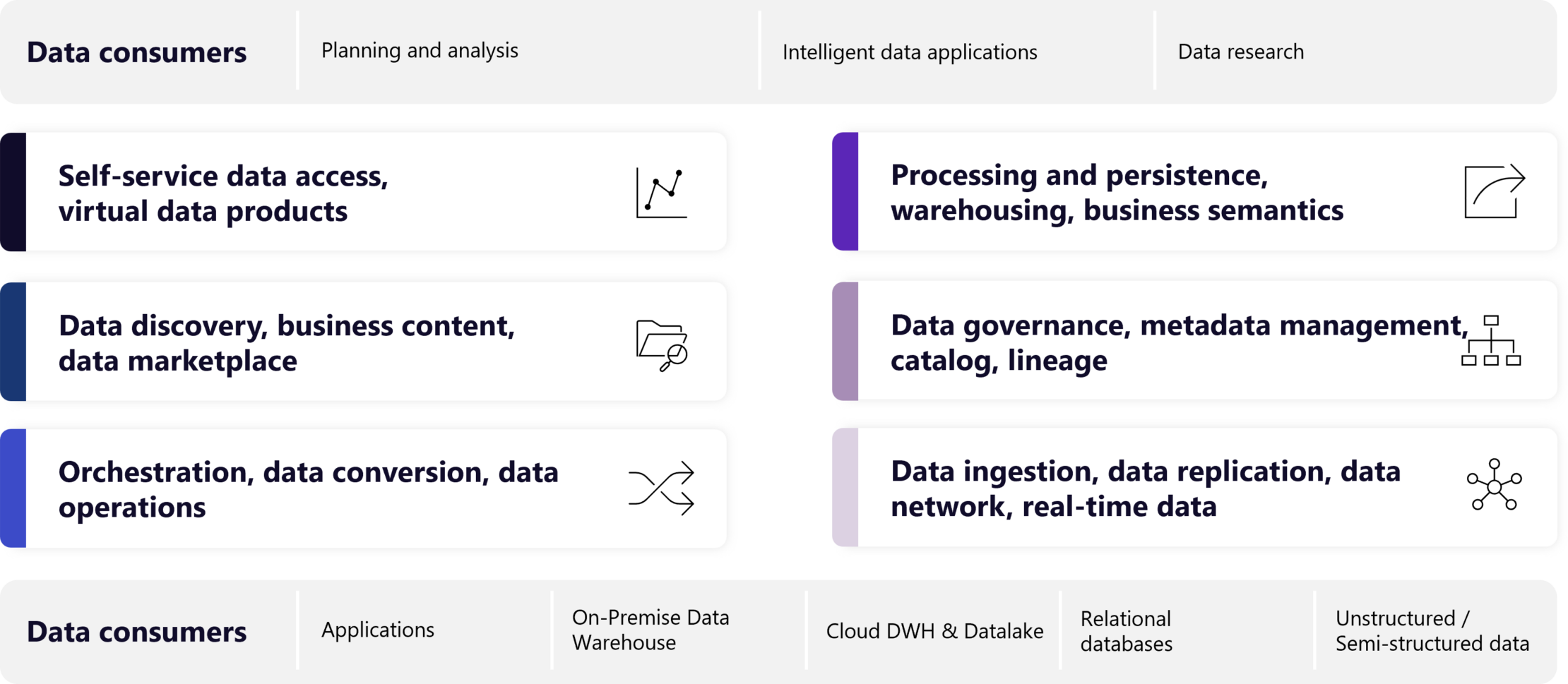
Our customers speak for themselves


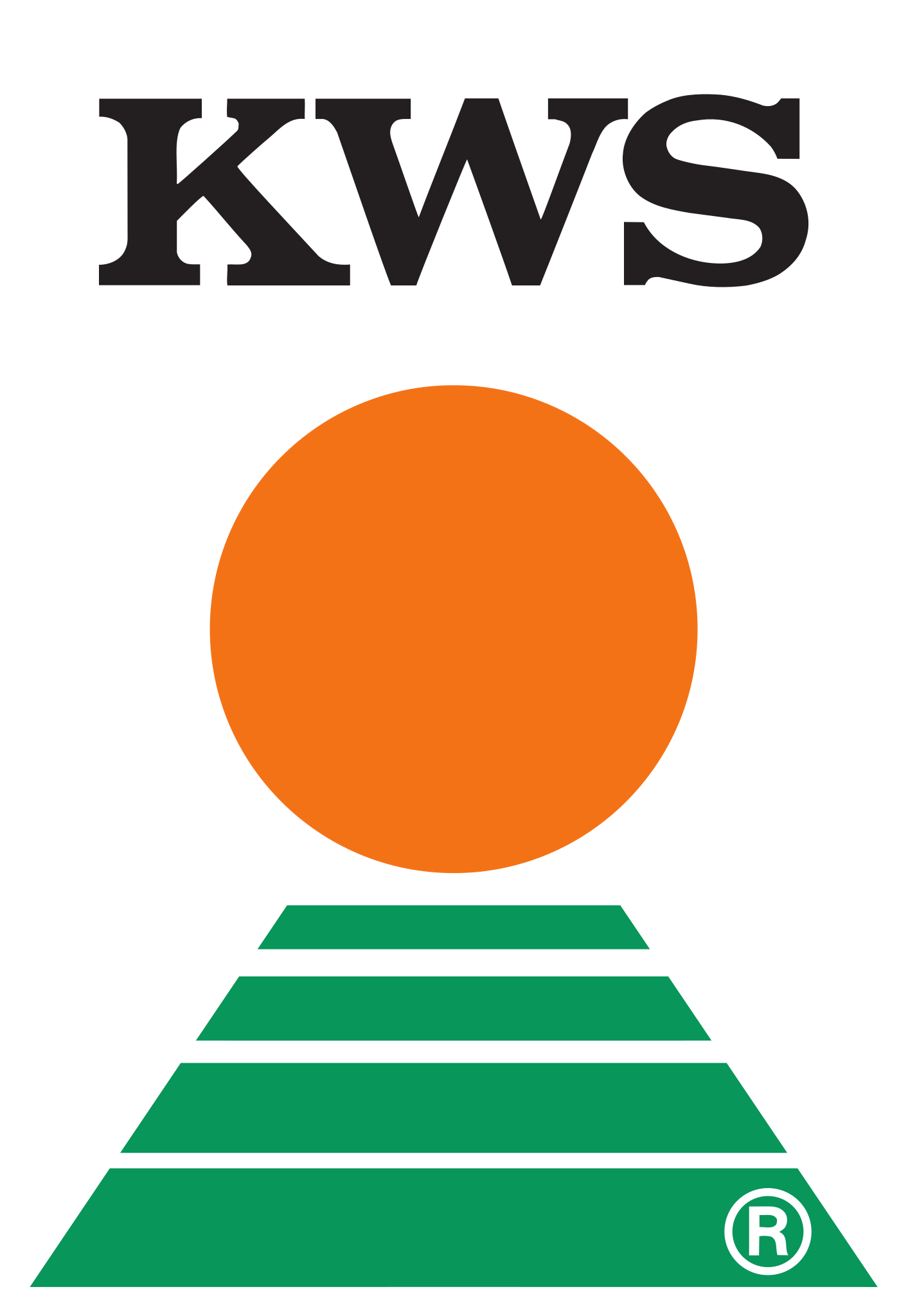

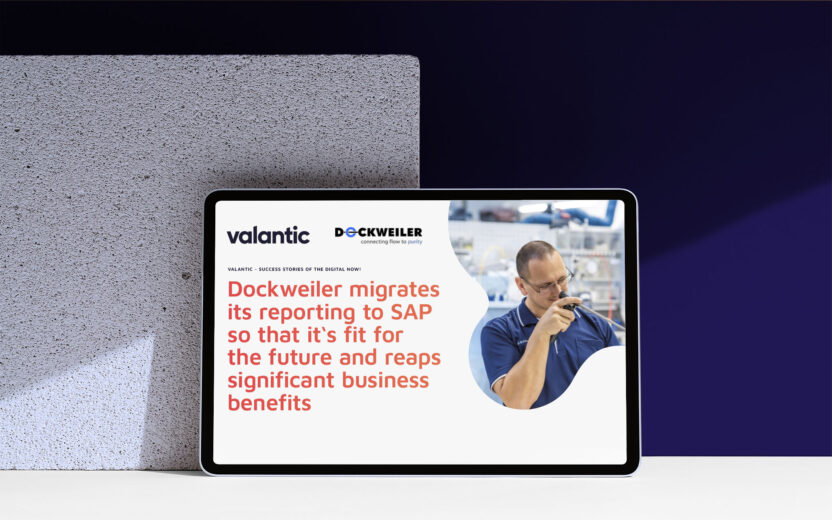
Success Story: Dockweiler migrates its reporting to SAP Datasphere so that it's fit for the future and reaps significant business benefits
With SAP Datsphere & SAC, Dockweiler has established an integrated reporting system to benefit from the various SAP applications.

Dockweiler project: Awarded by SAP as “Accelerator Package”
The Dockweiler project replaced IBM Cognos with SAP Datasphere in just four months and used the SAP Analytics Cloud for modern reporting. A success that underlines valantic’s expertise in system…
Migration from SAP BW 7.x
As a strategic tool for SAP, the SAP Datasphere is a serious alternative for current SAP BW/4HANA, SAP BW 7.3 -7.5 and other data warehouses. Today, customers can move their data warehouse to the cloud via different migration paths. With the SAP BW Bridge, it is possible to migrate existing systems easily and continue to benefit from investments already made. Customers can choose between a greenfield and a brownfield approach (remote or shell conversion).
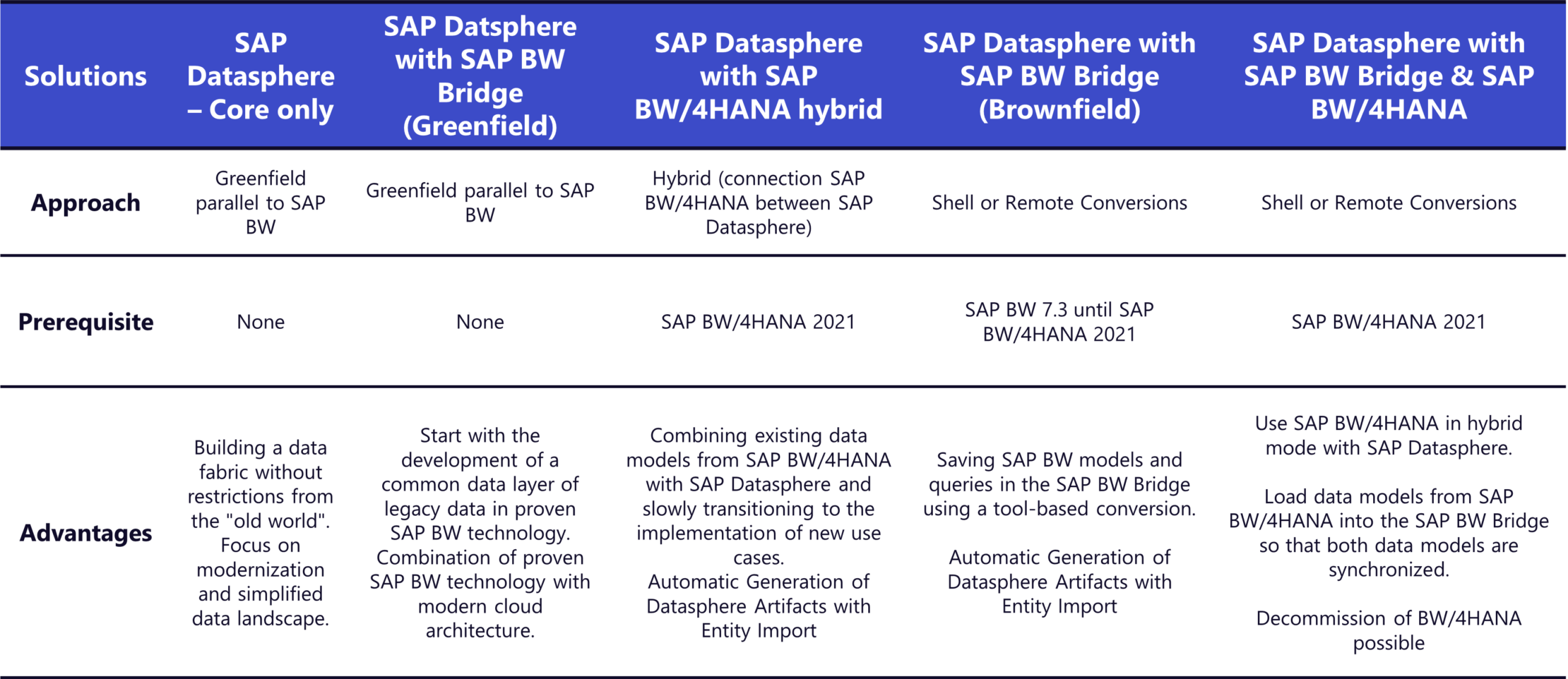
We will be happy to help you get a clear overview and assist you with your journey to the SAP Datasphere. Our task is to help you with orientation and then to help you as best we can.
Please take a look at our standard offers, which can serve as a starting point. We will create a customized quote based on your personal requirements. We are happy to help with both a new setup and the optimization of existing structures. Every step is important, and we want to make sure that you can take these steps with confidence and clarity.
We look forward to guiding you on your journey to the SAP Datasphere and working together to find the optimal solution for your unique needs and approach.
Successful business decisions thanks to end-to-end management
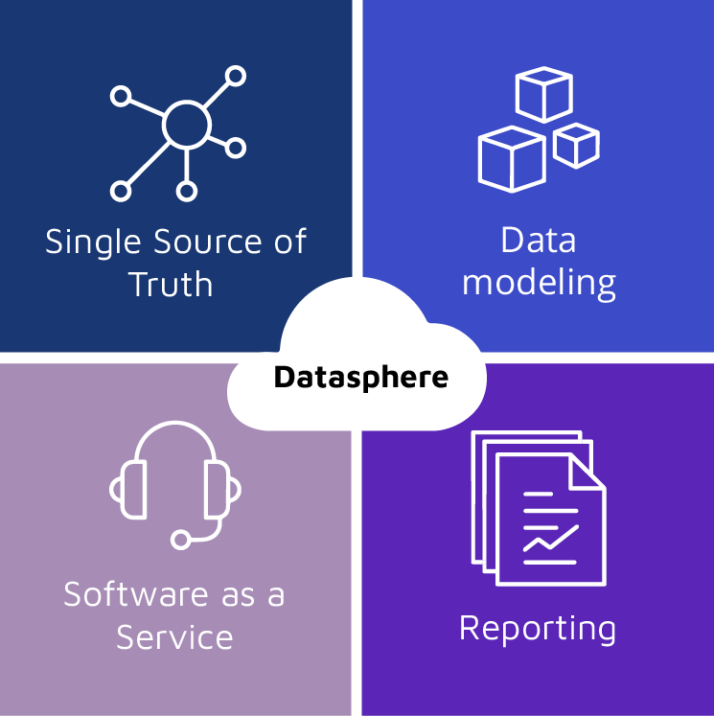
With the increasing amount of heterogeneous data, the complexity of combining this data and various systems increases too. Integrating systems for meaningful reporting plays an important role here.
The SAP Datasphere can distinguish itself as a heterogeneous business data fabric. With both ready-made and open connectors, there is nothing to stand in the way of integrating various source systems. Data access can be both persistent and virtual, so nothing stands in the way of real-time processing!
The SAP Datasphere maintains control over the data from all source systems. This homogenization of data enables end-to-end management within the system. In addition to data integration, the SAP Datasphere offers functionalities for data modeling and data analysis.
Here, SAP is relying on the strategy of orienting the system according to the needs of business users. With a user-friendly interface and no previous technical knowledge required, specialist departments can use the SAP Datasphere to independently develop data models and reports.
SAP Datasphere: Software as a Service
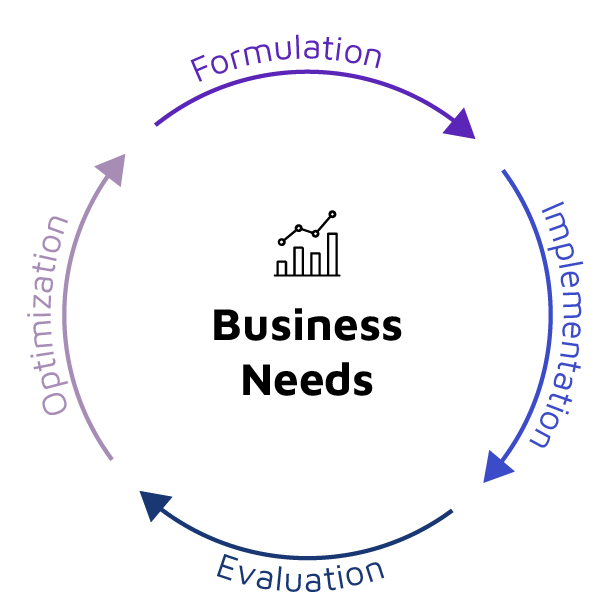
How is it possible to respond to a company’s business needs in agile fashion?
Requirements within a company are rarely rigid. They can change due to internal and external factors, and they often need to be adapted on short notice. Fully understanding the business needs at any time requires an appropriately agile system that maps these requirements.
The SAP Datasphere provides this agility and enables rapid adaptation to changing requirements thanks to its cloud-based functionality, without the need for complex technical requirements.
Companies can efficiently implement their business needs with the SAP Datasphere. After a brief introduction, the platform is ready to go, accelerating implementation. The storage space can be adjusted monthly thanks to a custom-tailored concept. This means that companies can leverage the resources they need, and the platform adapts to the business.
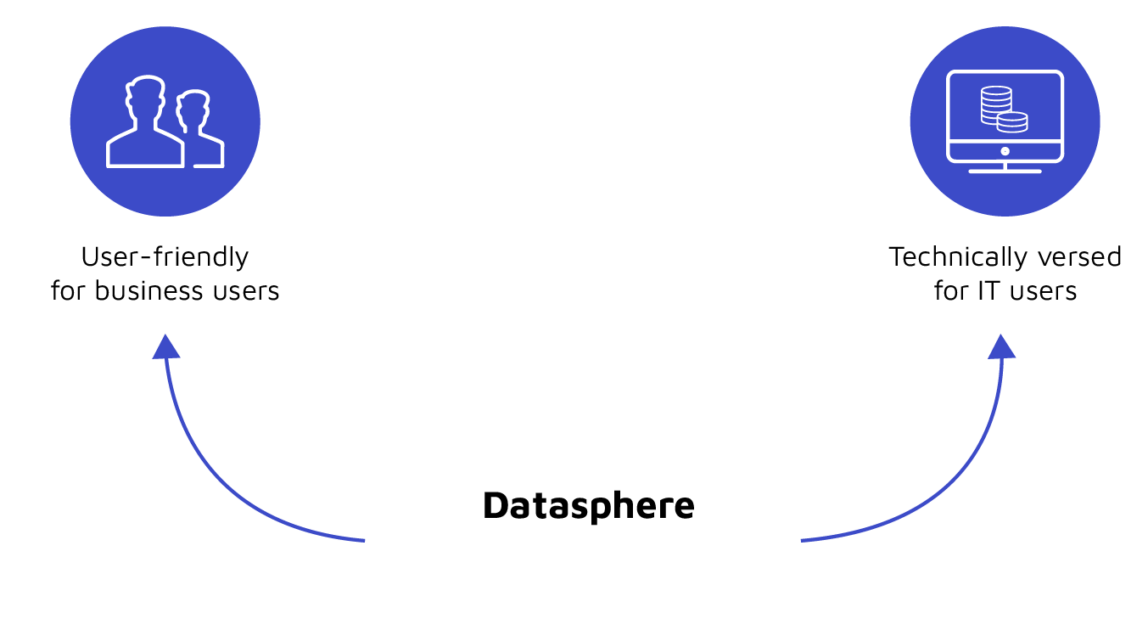
How can the business needs of the departments and IT be combined?
Frequently, individual departments and IT have a different understanding of business needs. Addressing the needs of both sides is often a challenge for companies.
The SAP Datasphere is designed as Software as a Service so that intuitive operation of the tool is possible. Business users can design models independently without changing the underlying data. Through virtual organizational units, so-called spaces, business users can also work in their specialist areas in the SAP Datasphere.
Single Source of Truth
How can data quality be increased despite heterogeneous systems?
Companies often access a variety of systems and heterogeneous data sources. The crux for companies is to treat the data uniformly. Otherwise, the danger of “data silos” lurks.
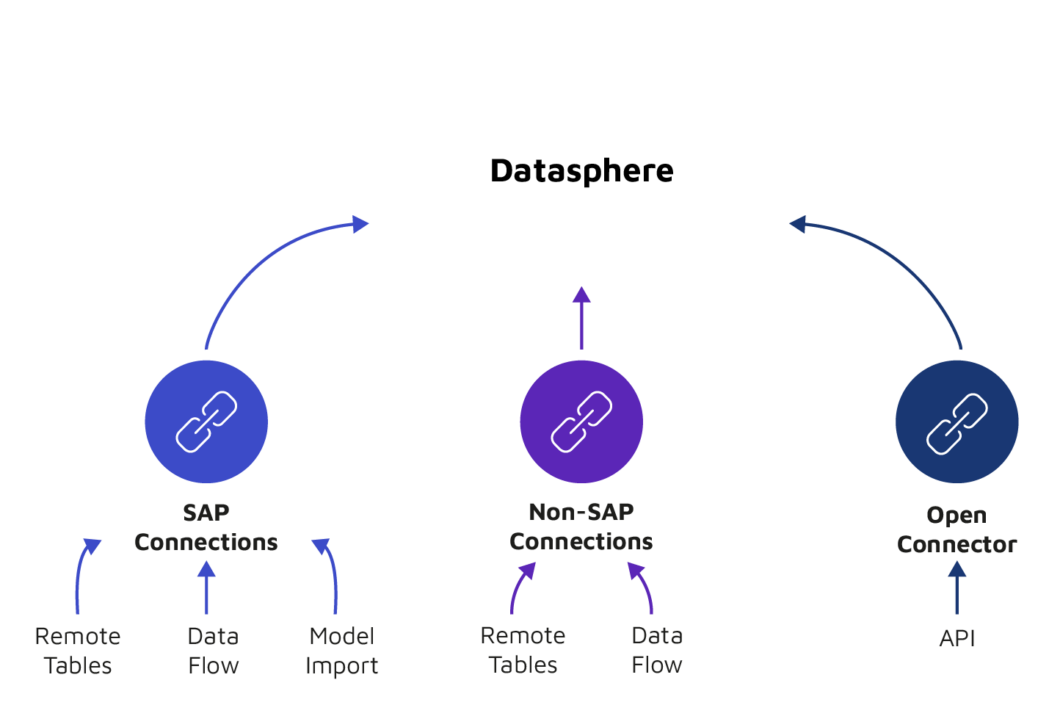
The main benefit of the SAP Datasphere is that it integrates heterogeneous source systems. The SAP Datasphere can be used as an extension of an existing business warehouse or as a stand-alone solution.
SAP offers various connectors to SAP systems, but also to other, non-SAP systems. It does not matter whether the systems are in the cloud or on-premises. The SAP Datasphere is designed to implement hybrid scenarios in the best possible way.
In addition, the SAP Datasphere gives companies the opportunity to enrich their data with external data. The existing connectors enable integration of data from social media channels into the SAP Datasphere. With this single source of truth approach, company-wide reporting is possible thanks to a system-wide standardization of the source systems.
Data modeling
How can data modeling be done efficiently?
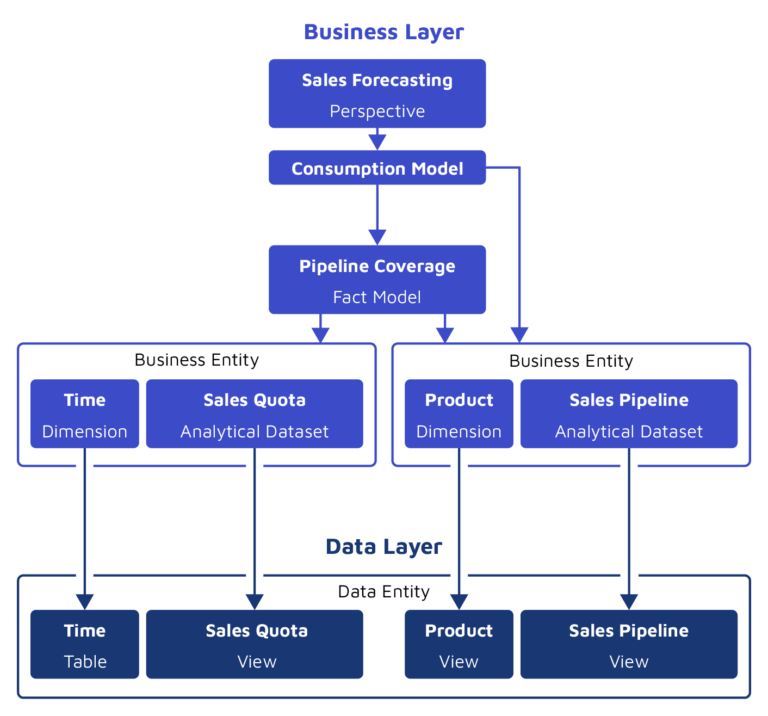
Data modeling should be designed to reduce throughput times from tables to finished reports.
The SAP Datasphere allows each department to define its own data models based on pre-made models. A division into delimited layers plays a decisive role here. In the data layer, IT maintains control over the data through fundamental tables and views. It is also possible to integrate existing models from source systems. On this basis, it is possible to create dimensions, fact models, and analytical datasets in the business layer. Finally, analyses can be created with a consumption model. The artifacts are protected by permissions throughout.
Reporting
How can authorizations be automated?
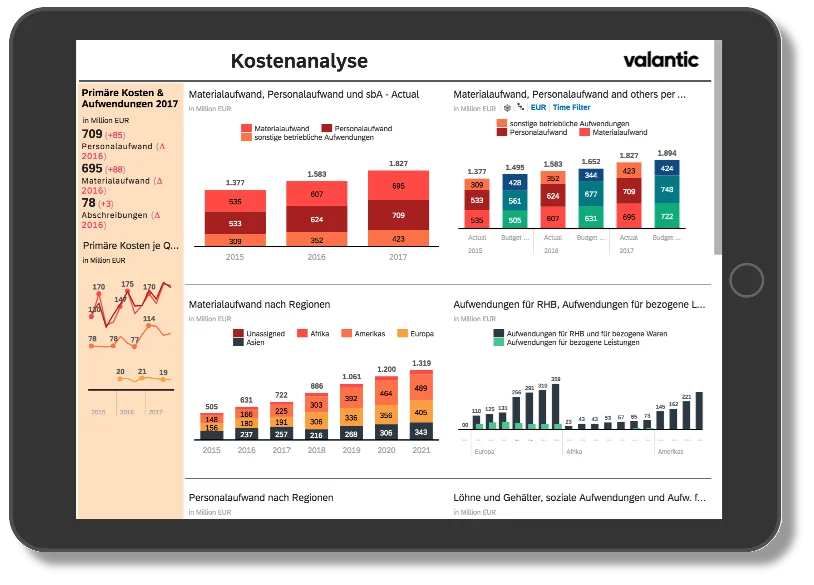
Meaningful reports are critical for making a successful decision. In our fast-paced world, reports should be designed to respond automatically to changing influencing factors and to reflect these. Mapping the data in a near-real-time environment is therefore very important.
Data modeling and reporting are tightly interwoven through the tight integration of the SAP Datasphere and SAP Analytics Cloud. Necessary adjustments in the data models are reflected directly in the reports. The machine learning features of the SAP Analytics Cloud and the SAP Datasphere can benefit greatly from one other and enable, for example, the creation of forecasts and ML analyses.
What we can offer you
-
1
Initial consultation
Get to know valantic and our specialists in a no-obligation interview. Get some first impressions of the solution.
-
2
Free workshop
Get a better idea of the system with realistic data. We will work with you to identify possibilities for integrating SAP Datasphere into your existing system environment.
-
3
Successful collaboration
Take your data warehouse to the next level with the SAP and valantic, and benefit from the possibilities in the cloud.
News & Downloads
Your Contact

Marcel Beckmann
SAP Analytics Manager
CoE Lead xData
valantic



